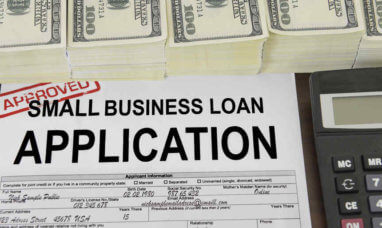Sometimes your home needs some extra work to make it look great. A beautiful home can be a better space to cook, entertain guests, and spend your time. Nobody wants to have a dull home, which is why more homeowners are remodeling to make their houses more appealing.
But how do you remodel your home without straining your finances? Home remodeling shouldn’t monopolize your emergency funds or savings. With the right strategy, you can remodel your home to your taste without hurting your pockets. Here’s how to pay for that home remodel you’re craving without tapping your equity.
Ways to Pay for Your Home Remodel Without Tapping Your Equity
Consider Getting a Home Renovation Loan
Certain mortgages include loans for home renovations so that you can finance your home and renovations all in one loan. This allows you to buy a home that you know will need immediate repairs or renovations.
Some of the most common home remodeling loan options include:
FHA 203(k) Loan
FHA 203(k) loans are government-insured mortgages for homes that require significant renovations. They are available for borrowers with low credit scores. However, these mortgages are expensive, and borrowers pay slightly higher insurance premiums because of their small initial payments. The overall principle of the FHA loan includes an upfront fee that varies depending on the down payment.
Borrowers can access full or streamline versions of this loan depending on the state of the property. Full FHA 203(k) loans cover major home repairs and remodeling projects. If your home only needs minor repairs, consider going for the streamlined loan option which covers home remodeling projects up to $35,000.
Jumbo Home Renovation Loan
Jumbo renovation loans combine mortgages and renovation loans. As with regular jumbo mortgages, these loans exceed the borrowing amount of conventional loans. Because of the high amount of the loan, there are stricter requirements to qualify for this mortgage.
This type of home remodeling loan is for non-structural projects that will add value to the borrower’s property. Before applying for this loan, you should consult with a real estate agent to identify appraiser-required renovations that will improve your property value significantly.
Before taking out home renovation loans, you should consult with trusted professionals to make sure you know what the best type of loan is for your specific circumstance. In general, you should go for loans that won’t eat up so much of your money in monthly premiums.
Get A Personal Loan
If you didn’t include a home renovation loan with your mortgage, can you get a personal loan after buying a house? If your credit score and finances are still in order, a personal loan may be an option to finance your home renovations.
Consider getting a personal loan if you want to make quick and urgent repairs to your home. These loans have less time-consuming appraisal and underwriting processes than most other options. Most borrowers can get the loans in less than a week if they have good credit scores.
However, personal loans have high interest rates of 6-36% depending on the lender. These types of loans should be reserved for projects that don’t cost more than $20,000 because they have a shorter repayment period and will accrue less interest. You can take advantage of lenders who let you prequalify for personal loans and determine if you’re comfortable with the monthly premiums they’ll require you to pay.
Use Your Own Money
Many homeowners remodel their homes using their own money. The beauty of using your savings for home remodeling projects is that you’ll do interest-free repairs.
Before undertaking home repair projects, ensure your savings will cover them without affecting your ability to pay other essential bills and expenses. As a rule of thumb, you can use about 25% of your savings to cover your home remodeling projects. Any excess of that can put you in a financial crisis that you could otherwise avoid.
Charge A Credit Card
Using credit cards to fund home remodeling projects can be quite expensive. However, with the right plan, you can make it work for you.
Some credit cards give you offers and rewards on certain home renovation purchases. Take advantage of that by purchasing your supplies from stores that are included in these offers.
If you have an excellent credit score of 690 or higher, charging a credit card may be an excellent way of completing your home remodeling project. Just ensure that you avoid extravagant renovations and go for projects that will improve your home value.
Get A Government Loan
Some lenders offer government-backed loans like Title 1 loans that help borrowers buy home appliances, make their homes energy-efficient, and improve accessibility. You can borrow $25,000 or less for a single-family home with a flexible repayment plan of 12-20 years.
Loans above $7,500 require homeowners to use their homes as collateral. You may have to prove that the collateral has been your home for more than 90 days, so this may not be an option for new homeowners. It is wise to check the Housing and Urban Development website to find legitimate lenders and their loan appraisal criteria.
When To Use Equity to Pay for a Home Remodel
An equity home loan allows you to secure a loan against the equity you have in your home. It is often known as a “second mortgage” because it is very similar to a mortgage.
Equity home loans are excellent if you want to do long-term home remodeling projects. One advantage of equity home loans is that market fluctuations don’t affect them. Borrowers receive these loans as a lump sum and repay them in fixed monthly installments over a specific term. Make sure that you pay your fixed monthly installments on time because your home is collateral. Before applying for an equity home loan, do an intensive analysis of the repairs your home needs, the cost of these renovations, and the projected value they will add to your home.
Final Thoughts
Home remodeling can significantly increase the value of your home. This is especially important if you want to sell your home in the future. However, you should only go for home remodeling projects that are essential or will actually add value. Avoid extravagant expenditures that won’t add any significant value to your home.
There are several ways to finance your home remodeling projects without ending up in a poor financial position. Take the time to carefully consider your loan options and compare lenders to find the best rates for your home renovation loan.
Featured Image: Twenty20








